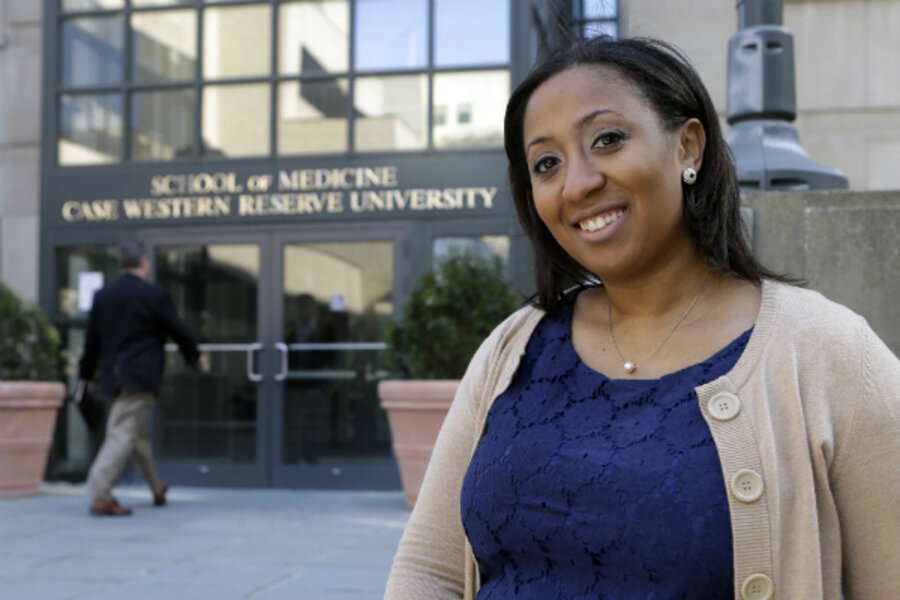In a first, black voter turnout surpassed white turnout in 2012
Loading...
For the first time, black voters went to the polls at a higher rate than white voters on Election Day 2012 – a shift that gave President Obama the margin of victory he needed to win the states of Ohio, Pennsylvania, Virginia, Florida, Colorado, and, as a result, a second term.
Had all racial groups turned out at the same rate as they had in 2004 or '08, Mitt Romney would have won the election, according to a new analysis of census data and exit polling by the Associated Press.
“The 2008 election was the first year when the minority vote was important to electing a US president. By 2024, their vote will be essential to victory,” said William Frey, a demographer at the Brookings Institution in Washington, who analyzed the data.
For the next decade, whites and blacks will remain the two largest racial groups, but by 2024, 1 in 3 voters will be nonwhite, according to the AP analysis, released Monday.
During the 2012 campaign, politicos and pundits argued about whether the minority vote was the key to winning the election. Of all eligible voters in the US, 71 percent are white, 12 percent are black, 11 percent are Hispanic, 4 percent are Asian, and 2 percent other. But the number of minority voters matters less than their turnout rate, Dr. Frey told the Monitor in September.
“It depends on what degree minority voters’ enthusiasm and turnout balances the white voters’ enthusiasm and turnout,” Frey said.
Overall voter turnout declined from 62 percent in 2008 to 58 percent in 2012. White voters cast 72 percent of the total votes in 2012, down from 74 percent in 2004. That lower turnout rate accounted for 2 million to 5 million fewer white voters at the polls in 2012.
Black voters accounted 13 percent of the total votes cast in 2012, a repeat of 2008 – the first election in which their share of the total vote was larger than their share of the total population. States with significant black populations did not have as much of a decline in voter turnout as other states, said Michael McDonald, an associate professor at George Mason University in Fairfax, Va., who reviewed the analysis.
“The 2012 turnout is a milestone for blacks and a huge potential turning point,” Andra Gillespie, a political science professor at Emory University who has written extensively on black politicians, told the Associated Press. “What it suggests is that there is an 'Obama effect' where people were motivated to support Barack Obama. But it also means that black turnout may not always be higher, if future races aren't as salient.”
NAACP President Benjamin Todd Jealous said that blacks turned out in large numbers due to Mr. Obama’s concentrated get-out-the-vote drive, and in spite of controversial voter ID laws that some experts say deters minorities from voting.
"Black turnout set records this year despite record attempts to suppress the black vote," Mr. Jealous said.
Minority demographics seem to favor Democrats – Obama won 93 percent of blacks, 71 percent of Hispanics, and 73 percent of Asians, the Monitor reported in November – a fact that is forcing Republicans to reevaluate their political strategies.
Although Latinos, at 17 percent of the population, are the fastest growing minority group in the US, they represent only 10 percent of the total votes cast in 2012. If 11 million immigrants here illegally become eligible for US citizenship – as they could under the proposed Senate immigration reform bill – the total share of Latino voters could spike to 16 percent by 2026.
“Democrats will be looking at a landslide going into 2028 if the new Hispanic voters continue to favor Democrats,” Frey said.
The last election showed that the Republican Party needs “a new message, a new messenger and a new tone,” said Whit Ayres, a GOP consultant who advises Sen. Marco Rubio (R) of Florida, a potential 2016 presidential candidate.
That's one reason some Republicans are eager to back some form of immigration reform, which could earn the support of minority votes, Mr. Ayres said.
• Material from the Associated Press was used in this report.






